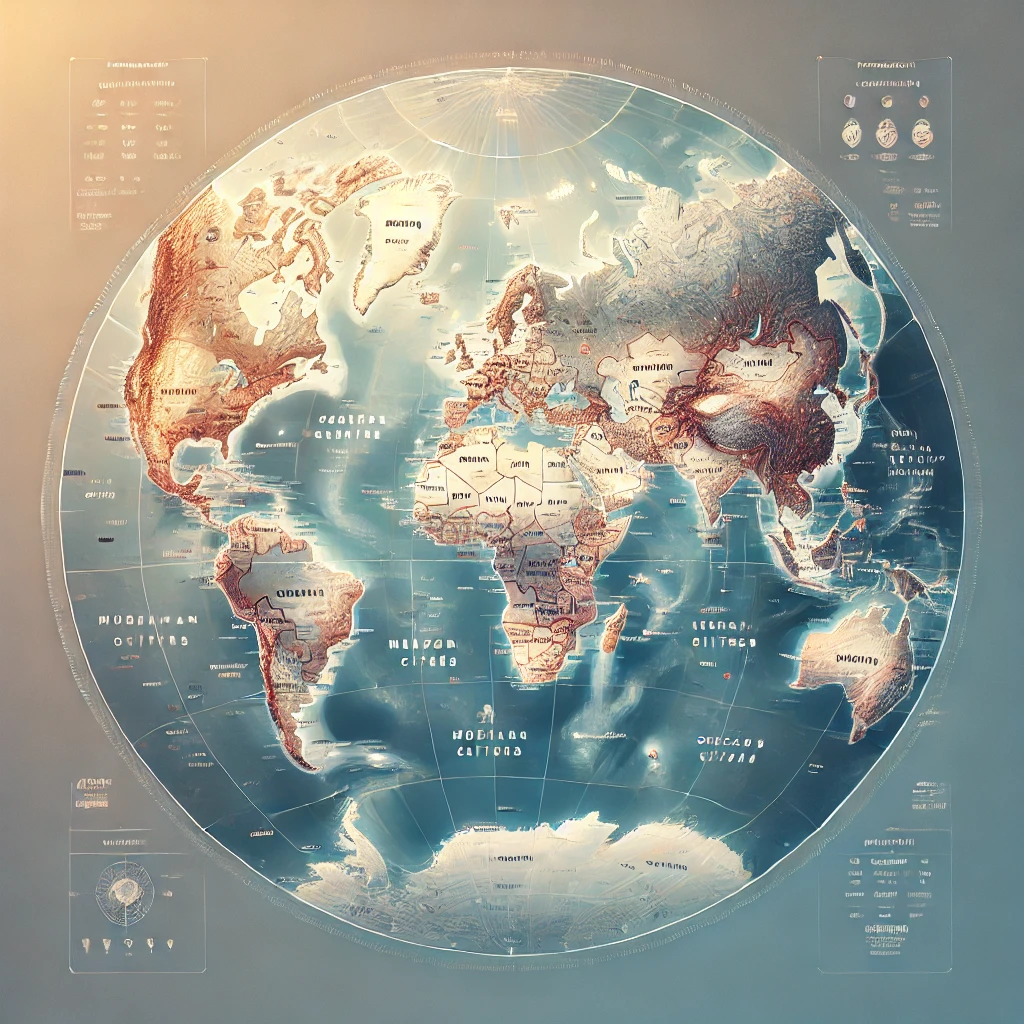Incorporating artificial intelligence (AI) into the classroom offers exciting opportunities for TESOL educators to engage students in creative and interactive ways. One such activity, the Capital Cities of the World Game, combines geography, critical thinking, and language skills to create a dynamic learning experience. Below, we outline a range of prompts, activities, and tips to make this game both educational and entertaining for students of all levels.
For Students: Fun and Interactive Prompts
Engage your students with simple, clue-based, and multiple-choice prompts to spark curiosity about global geography.
1. Guess the Capital
“I’m thinking of a country. Its capital is known for its cherry blossoms and technology. Can you guess the country and its capital?”
(Answer: Japan, Tokyo)
2. Clue Challenge
“This capital city is famous for the Eiffel Tower and art museums like the Louvre. What city am I describing?”
(Answer: Paris, France)
3. Multiple Choice
“Which of these is the capital of Australia? A) Sydney B) Melbourne C) Canberra D) Perth”
(Answer: C) Canberra)
4. Riddle Me This
“I am a city known for my canals, tulips, and bicycles. What is my name?”
(Answer: Amsterdam, Netherlands)
5. True or False
“True or False: The capital of Brazil is Rio de Janeiro.”
(Answer: False, it’s Brasília)
For Educators: Collaborative and Critical Thinking Activities
Educators can use AI to foster teamwork, encourage deeper thinking, and promote interaction through these engaging activities.
1. Classroom Collaboration
“As a group, name as many capital cities as possible in one minute. ChatGPT will keep count and let you know if they’re correct!”
2. Spot the Mistake
“I will name a country and a capital. You tell me if I’m right or wrong. For example, ‘Italy, Madrid.’ What’s the correct answer?”
(Correct Answer: Italy, Rome)
3. Fill in the Blank
“The capital of Kenya is _______. Can you complete the sentence?”
(Answer: Nairobi)
4. World Trivia Time
“Which capital city is built on seven hills and has the Colosseum?”
(Answer: Rome, Italy)
5. Challenge the AI
“Can you stump ChatGPT? Think of a country and ask ChatGPT to name its capital. Let’s see if AI knows its geography!”
Interactive Bonus Rounds
Introduce dynamic and fast-paced games to challenge students and make learning geography even more fun.
1. Lightning Round
“Name the capitals of 5 Asian countries in under 30 seconds. Ready, set, go!”
2. Reverse Guess
“I’ll name a capital, and you tell me the country. For example, if I say ‘Ottawa,’ you say…?”
(Answer: Canada)
3. Around the World Game
“Start with a capital city. The next person or ChatGPT must name a country whose name starts with the last letter of the capital. For example, ‘Tokyo’ -> ‘Oman’ -> ‘Nepal’!”
Advanced and Contextual Prompts
Push students’ knowledge further by incorporating geography, history, and critical thinking.
1. Prompts for Geography Enthusiasts
- “What are the capitals of the Scandinavian countries?” (Answers: Copenhagen, Oslo, Stockholm)
- “Name the capital cities located on the Mediterranean Sea.” (Examples: Athens, Rome, Tripoli)
- “Which capital city is the highest above sea level?” (Answer: La Paz, Bolivia)
2. Creative Exploration
- “Tell me three interesting facts about the capital of Egypt.” (Cairo facts: Home to the Great Pyramids, oldest university, and vibrant bazaars)
- “Describe what it would be like to visit the capital of India.” (Encourage imaginative exploration of Delhi’s landmarks and culture)
3. Historical and Tricky Questions
- “What was the capital of Kazakhstan before Astana?” (Answer: Almaty)
- “What is the official capital of Bolivia?” (Answer: Sucre, with La Paz as the seat of government)
- “Are there any capital cities that share the same name as a state or province?” (Examples: Mexico City, Panama City)
Tips for TESOL Educators
- Start Simple: Begin with easy questions to build confidence before introducing more complex prompts.
- Encourage Research: Have students verify AI’s answers to deepen their understanding and improve research skills.
- Focus on Learning: Emphasize exploration of geography, cultures, and history rather than just getting the “right” answer.
- Use as a Springboard: Expand discussions to cover topics like historical events, trade, and cultural influences.
- Promote Critical Thinking: Encourage students to analyze AI responses and identify any inaccuracies.
Conclusion
The “Capital Cities of the World” game is more than a geography quiz—it’s a platform for engaging students, fostering curiosity, and integrating technology into the TESOL classroom. By combining AI with interactive prompts, educators can create a vibrant learning environment that not only teaches geography but also inspires students to explore cultures, history, and the world around them.
Whether through collaborative activities, creative exploration, or challenging prompts, this game can transform a simple session into an unforgettable educational experience. So why wait? Start playing and watch your students’ knowledge and enthusiasm for the world grow!



